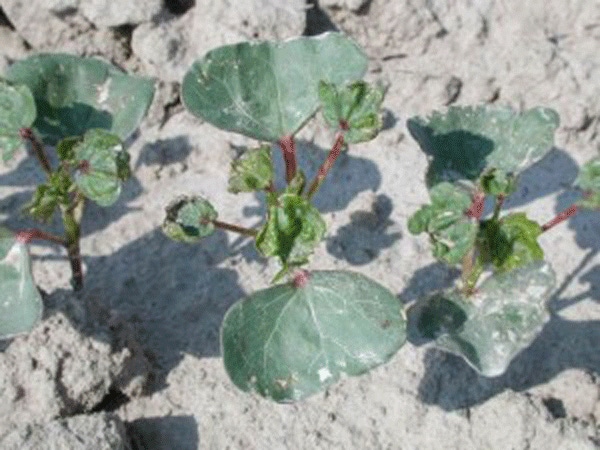June 4, 2013

During the past week (May 27-31) of hot dry weather in many areas of the state, we had several reports of acephate (Orthene and others) failures for thrips control.
On the other hand, a number of producers have been getting good control with acephate.
When control failures occur during prolonged dry weather, this is most likely due to the presence of hard-to-control (and difficult to identify) western flower thrips.
In one cotton field in far eastern North Carolina, a producer had a control failure after using acephate (Orthene). Dominic Reisig identified the adults in the sample as 95 percent western flower thrips (19 westerns and one tobacco thrips!).
Radiant is the only western flower thrips-active insecticide labeled on cotton. That’s the good news.
On the other hand, the 6 ounces of Radiant that is very active on all thrips species found on cotton will set producers back approximately $35 per acre. However the 1.5 to 2 ounce product rate ($8.75 to $11.66) tank-mixed with Dyne-Amic 0.625 percent (volume/volume) looked acceptable against both other thrips species (primarily tobacco thrips) and western flower thrips in a 2012 thrips test at the Upper Coastal Plain Research Station near Rocky Mount.
Although the use of Radiant would probably not be a wise choice for routine thrips foliar applications, this product may be a good one-time option in situations where western flower thrips are suspected following a prior control failure.
One present bright spot is the general rainfall over most of the state today and possibly tomorrow (June 3- 4). Westerns seem to thrive in hot dry weather and “suffer” population declines during rainy spells. Hopefully, westerns will be a minimal problem in this coming week in areas of good rainfall.
One final note: In the coming days, be sure to observe the “5 True Leaf Rule.” Even if cotton is severely damaged by earlier thrips feeding, cotton can no longer be economically damaged by thrips when seedlings reach the 5 true leaf stage.
For more on the North Carolina cropping situation, see http://www.nccrops.com/.
More from Southeast Farm Press
Thrips making run at North Carolina cotton
Native warm-season grasses weather drought, provide many other benefits
Applicants sought for ASA/DuPont Young Leader program
Sensors designed to help growers irrigate crops only when necessary
Alabama farm leaders embrace new rural crime unit
Combat soldiers benefit from fruit, vegetable-infused rations
You May Also Like




